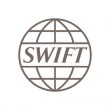How AI can help identify front and shell companies
In recent years, financial crime scandals involving front and shell companies have led to fines of hundreds of millions, even billions, of dollars.

Detecting front and shell companies can help banks and fintechs avoid huge regulatory fines
Illicit actors have long used these anonymous entities for money laundering, terror financing, tax evasion and other financial crime, putting financial institutions that provide services to front and shell companies at risk of increased scrutiny and compliance costs.
This compels financial institutions to identify potential client and counterparty front and shell companies more accurately — especially during KYC and periodic screenings. However, current systems are lagging behind the sophisticated actors organising these crimes.
So, what should firms know about the current state of front and shell company networks, and what new advanced technologies can be used to detect them and mitigate the risks?
The current state of play
While being legitimate entities, illicit actors sometimes use front and shell companies for illegitimate purposes, exploiting the opaque ownership structure. In these instances, front companies are set up with legitimate business operations and shell companies are incorporated with no active business operations or significant assets to obscure illicit financial activities.
Recent investigations by the International Consortium of Investigative Journalists (ICIJ), including the Panama Papers, Paradise Papers, Luxembourg Leaks and the FinCEN Files, examined the pivotal role that front and shell companies play in facilitating financial crime, particularly money laundering, political bribery and corruption and tax evasion, which cost the global economy trillions of dollars each year.
A study by the International Monetary Fund estimated that $15 trillion is held in shell companies across the world. And according to the UN Office on Drugs and Crime, the money laundered globally per year amounts to 2-5% of the global GDP, equivalent to $800 billion – $2 trillion.
The magnitude of these crimes has prompted governments to toughen their stance against the misuse of front and shell companies through legislative changes, demanding greater disclosure and increased transparency into beneficial ownership. For example, the UK introduced legislation providing new enforcement powers to combat local and foreign tax evasion.
More recently, the US Congress included a provision to ban anonymous shell companies in the National Defense Authorization Act, requiring such corporations to provide ownership information to states in order to avoid penalties and jail time — although there are certain exceptions. This information will be made accessible to federal law enforcement and financial institutions for due diligence. Other countries in Europe and elsewhere are also demanding greater disclosure through legislation, such as the Fourth Anti-Money Laundering Directive (4AMLD).
The challenges in identifying potential front and shell companies
Although financial institutions are facing immense pressure to comply with the legislative changes, it is becoming more and more difficult to identify front and shell companies as criminals adopt sophisticated methods to bypass detection. For instance, the Financial Action Task Force (FATF) points out that money used for illicit purposes could flow through multiple layers of front and shell companies in multiple jurisdictions before withdrawal, and a majority of such cases involve corporations in a foreign jurisdiction.
Thus, to identify potential front and shell companies, firms need to actively monitor transaction volumes and frequencies, while examining clients and counterparties for high-risk indicators such as locations of stakeholders, nature of payments, number of employees, news mentions and so on. The European Banking Authority (EBA) specified that firms also need to consider the extent to which the company’s products and services allow beneficial owners and customers to conceal their identity.
This means that the current approach by financial institutions is inadequate, as it often only involves cross-checking client information with records in internal databases and querying internal systems for high-risk indicators. The increased complexity of front and shell company networks has also made enhanced due diligence more time consuming and laborious.
Applying AI to overcome the challenges
Financial institutions can overcome these challenges with advanced AI technologies. During the onboarding process, firms can use knowledge graphs to build 360-degree client profiles for risk assessment. The knowledge graph represents a collection of interlinked descriptions of entities – objects, events or concepts. New data is extracted live, as needed, from the original sources.
By applying knowledge graph technology, firms become highly efficient at processing and orchestrating data about beneficial owners and other parties from internal and external sources, in both structured and unstructured formats. And with natural language processing and entity resolution, ambiguous data such as address and name spellings can be automatically clarified.
Then, through pattern-matching algorithms, firms can analyse client profiles to detect potential front and shell companies based on a set of high-risk indicators while classifying them under various risk levels. By ensuring that these algorithms are customisable, financial institutions can configure the underlying parameters and patterns to fit their jurisdiction and business requirements.
Clients and counterparties can also be screened against PEP lists, sanctions lists and adverse media, among others, while applying ongoing transaction monitoring using machine learning algorithms to detect unusual transaction patterns.
AI can effectively help financial institutions to more accurately spot potential front and shell companies by detecting red flags and utilising machine learning algorithms to calculate risk scores for clients and counterparties.
About the author
Harinder Singh Sudan is senior vice president, financial intelligence unit at BlackSwan Technologies.
He has close to 20 years industry experience in banking and financial services and leads BlackSwan’s FIU practice globally.
Harinder has worked with a number of tier one banks and consultancies and managed service providers in the UK, Europe and Middle East. He has deep expertise in financial crime compliance; covering operations, technology architecture, program management and delivery of global remediation programs.










































